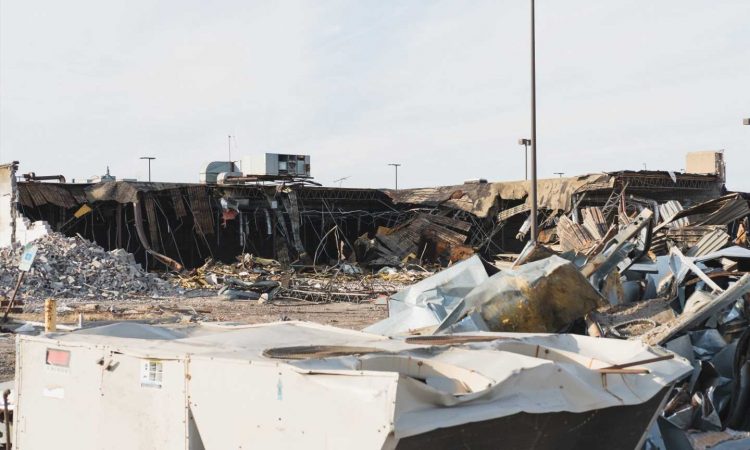
The death toll from the Turkey and Syria earthquakes has continued to climb, with more than 37,000 lives lost. This staggering number is likely to grow even higher over coming days as the rubble is cleared. The disaster is now among the top five most deadly earthquakes globally in the past two decades.
Much of the focus has centered on the immense loss of life in the immediate aftermath of the earthquakes. But many lives will still be at risk in the months to come. While hard to track, we know from other cases that death tolls rise because of a lack of adequate medical care, clean water and shelter following disasters.
These secondary crises can have devastating impacts, as past disasters around the world have shown.
Toll can soar long after disaster strikes
In Puerto Rico after Hurricane Maria in 2017, the immediate official count of 64 fatalities was adjusted to nearly 3,000 in the following six months. This tragic increase was attributed to deteriorating health conditions driven by the loss of infrastructure and basic services.
In northwest Syria, conflict spanning more than a decade has left infrastructure in tatters. The World Bank estimated in 2017 that more than a third of Syria’s housing stock had been damaged or destroyed in the conflict.
In a sign of the precarious state of buildings before the earthquake, a five-storey building collapsed last month, killing 16 people. Many blast-damaged buildings present an ongoing risk now that the quake has further destabilized them.
The earthquakes also come against the backdrop of a cholera outbreak. The disease was already affecting parts of Syria, but had received little attention.
After the 2010 Haiti earthquake, a cholera outbreak brought in by humanitarian workers took almost a decade to stamp out. There were more than 820,000 cases and nearly 10,000 lives lost.
Last week’s earthquake has also occurred amid freezing winter conditions. Many displaced families are out in the cold after losing their homes. Temperatures in Kahramanmaraş—the epicenter of the magnitude 7.8 earthquake—and across quake-affected regions are plunging to -5°C at night.
Erecting adequate shelter to protect people from the cold must be a central focus of the evolving humanitarian response.
Syrians were already in dire need
The situation in Syria was already dire before the earthquake. In northwest Syria, 90% of the 4.6 million people living there already were relying on humanitarian assistance to meet their basic needs.
Humanitarian access to northwest Syria remains complicated. There has been only a single aid border crossing, at Bab al-Hawa, brokered by the United Nations Security Council. As a sign of the difficulties accessing opposition-held areas of Syria, only two aid conveys had been able to cross from Turkey in the past week.
UN aid chief Martin Griffiths admitted shortcomings in reaching those in need: “We have so far failed the people in northwest Syria. They rightly feel abandoned. Looking for international help that hasn’t arrived.”
Over the weekend, the United States approved a 180-day exemption on sanctions for disaster aid to Syria, paving the road for alternative pathways to reach opposition-held areas. However, Syrian government calls for all humanitarian assistance to be delivered through the government are fraught with issues given its track record of diverting aid over the past decade.
A long road to recovery
As rescue operations stretch into the second week, communities are already looking toward recovery. Turkish President Recep Tayyip Erdoğan has promised to rebuild areas hit by the earthquakes within a year. Syrian communities face the added challenge of rebuilding from conflict.
Lessons from similar disasters teach us affected communities have just started on a long road towards recovery and rebuilding.
As the continued challenges of humanitarian access make clear, it is important for local organizations working in northwest Syria to be at the center of the response. The Syrian Red Crescent, Syrian Civil Defense (White Helmets) and other local organizations have played a vital role during the past decade of conflict and will no doubt do so again in coming weeks and months.
The recent earthquakes offer an opportunity to break through political barriers that have stifled rebuilding in Syria. However, the underlying vulnerability that compounded this disaster will not be resolved quickly. It is deeply embedded in social and political systems in both Syria and Turkey.
What can you do to help?
It can be tempting to donate goods, but consider giving cash to support humanitarian efforts, instead of sending physical items. Cash allows humanitarian organizations to adapt to rapidly changing needs, while also giving households flexibility to decide on their own priorities.
The Syria Cross-Border Humanitarian Fund is enabling humanitarian partners, particularly Syrian organizations on the ground, to access some of the hardest-to-reach areas affected by this disaster.
Provided by
The Conversation
This article is republished from The Conversation under a Creative Commons license. Read the original article.
Source: Read Full Article
